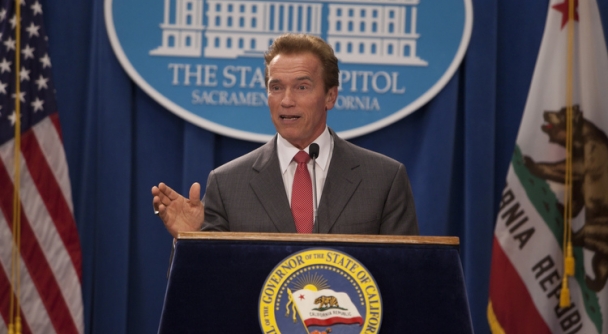Reforming our Budget

November 2003 The Governor’s first budget reform proposal (the California Recovery Plan) included a constitutional amendment to limit spending; financed inherited debt by issuing economic recovery bonds; and reformed California’s workers’ compensation system.
March 2004 The Governor negotiated and championed Propositions 57 and 58. The Economic Recovery Bond Act (Proposition 57) made $15 billion in bonds available to pay off California’s General Fund deficit, without raising taxes. The California Balanced Budget Act (Proposition 58) requires the state to enact a balanced budget each year; allows the Governor to declare a fiscal state of emergency and make mid-year budget adjustments, in the event that the state faces significant revenue shortfalls or spending deficiencies; established a “rainy-day” reserve; and prohibits most future borrowing to cover budget deficits (general obligation bonds, revenue bonds, and certain other forms of long-term borrowing).
November 2004 The Governor worked with the legislature to place the Protection of Local Government Revenues Act (Proposition 1A) on the November 2004 ballot and campaigned on its behalf. Passed by voters, this constitutional amendment prevents the state from taking funding from local coffers. Prior to Governor Schwarzenegger’s administration, local governments criticized the state for regularly using local tax dollars in difficult budget years to help cover Sacramento shortfalls.
November 2005 The Governor championed a strict spending limit, the California Live Within Our Means Act (Proposition 76). After negotiations with the legislature failed, Governor Schwarzenegger went to the ballot with Proposition 76, a constitutional spending limit and overhaul of the state budget process. Proposition 76 was defeated after opponents spent $150 million. Proposition 76’s provisions:
• Limited state spending to the prior year’s level plus three previous years’ average revenue growth.
• Changed state minimum school funding requirements (Proposition 98) and eliminated the repayment requirement when minimum funding was suspended.
• Excluded appropriations above the minimum from schools’ funding base.
• Directed excess General Fund revenues, currently directed to schools and tax relief, to budget reserve, specified construction, and debt repayment.
• Permitted the Governor, under specified circumstances, to reduce appropriations, including employee compensation and state contracts.
• Continued prior-year appropriations if the state budget was delayed.
• Prohibited state special funds borrowing.
• Required payment of local government mandates.
August 2007 The 2007 budget, adopted after a two-month impasse, was considered by many a victory for conservatives because of its austerity. The budget signed by Governor Schwarzenegger included the largest reserve of any budget act in the state’s history, $4.1 billion, and paid off $2.5 billion in bond debt early. General Fund spending growth in the 2007 budget was held to $0.6 billion, or 0.6 percent.
January 2008 The Governor introduced a new spending limit, the Budget Stabilization Act. This measure established a Revenue Stabilization Fund (RSF), a savings account into which the state would be required to deposit annual excess revenues. Such automatic savings would ensure that California does not again fall into the trap of spending all its revenues in prosperous times.
December 19, 2008 Governor Schwarzenegger proclaimed a fiscal emergency and exercised his executive authority to save cash for vital state functions and services by ordering two, and later three, furlough days every month for government employees. This action saved the state $2.8 billion in funds for the seventeen months that furloughs were in effect; it was upheld by the state Supreme Court despite a flurry of lawsuits. The Governor ordered a similar program in July 2010 during another cash crisis.
February 19, 2009 As part of the 2009 budget agreement, Governor Schwarzenegger won reforms to eliminate waste and fraud from California’s welfare program. These reforms—which address aid limits, self-sufficiency reviews, graduated sanctions, and a sanction clock—will save the state $600 million annually beginning in 2011–2012.
October 8, 2010 As part of the 2010 budget agreement, Governor Schwarzenegger successfully got an initiative on the 2012 ballot to let California voters establish a “rainy-day” fund for the state, to be used during years of economic crisis. This initiative would limit spending and force Sacramento to save money in good years to cover shortfalls in bad years.
Veto Authority Governor Schwarzenegger has exercised his veto authority more than any governor in the modern era (1,991 of 7,575 total bills, or 26.3 percent), saving taxpayers millions of dollars in unnecessary government spending. In 2008 he vetoed 35 percent of all bills that reached his desk, a record for a California governor.
Low Spending Increases The Schwarzenegger administration has presided over by far the lowest average year-to-year spending increases in the past forty-five years, as is evident in this listing of gubernatorial administrations:
• Governor Ronald Reagan (1967–1975): 13.6 percent
• Governor Jerry Brown (1975–1983): 12.7 percent
• Governor George Deukmejian (1983–1991): 8.0 percent
• Governor Pete Wilson (1991–1999): 4.6 percent
• Governor Gray Davis (1999–2003): 6.3 percent
• Governor Arnold Schwarzenegger (2003–2010): 1.4 percent
More Reforms Governor Schwarzenegger has proposed and implemented permanent reforms that will save California taxpayers more than $5 billion annually, including:
• Eliminating automatic Cost of Living Adjustment (COLA) increases, saving $2.2 billion each year.
• Streamlining Health and Human Services (HHS) programs, saving $1.8 billion each year.
• Reforming California Department of Corrections and Rehabilitation (CDCR) Custody and Parole programs, saving $700 million each year.
• Reforming overtime and holiday requirements for state employees, saving $100 million each year.
• Additional government reorganization and consolidation efforts, saving $100 million each year.
• Leveraging valuable but underutilized state assets, saving $70 million each year.
